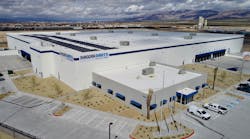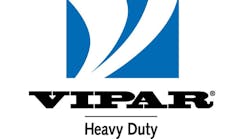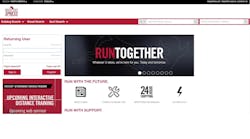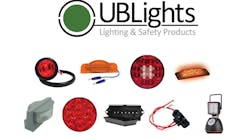With onboard diagnostics increasingly controlling an elaborate tapestry of engine functions and components, many shops that upfit or service commercial trucks say they need access to this information.
But OEMs, who have spent millions of dollars developing that software and intellectual property, want to control that.
Who's right?
To examine the complex and controversial issue, the Heavy Duty Manufacturers Association put together a panel of experts for a session, “Access to Product and Service Information: An Industry Perspective.”
“This is an access-to-information issue, which is when essential technical information needed to correctly and safely repair a truck or provide the correct part is restricted to truck dealers and their affiliates,” said panel moderator Dave Scheer, president of Inland Truck Parts and Service. “One of the myths that exists is that this only affects those who work on trucks. But that's not true. If you're a part supplier and you're supplying a part to your customer who works on a truck, he needs this information. It's also not just an engine problem. Even though the access-to-information restriction primarily began in the engine area, it is extending to other truck components.
“Is this a real issue? Some would argue that it's not, and that the information is available if you just know where to look. But we at Inland face this issue every day. We know where to look. And not all the necessary information is available to us as an independent.”
Scheer provided some real-life examples, showing pictures to illustrate them:
-
Balancing act
A transmission-control module lost communication with a truck. “We have no information. No wiring schematics, bulletins, or updates are available. In order to repair this vehicle and re-establish communication with the truck, we had to take the truck back to the dealer for repair.”
-
Cummins electronic control units. “We can't read or clear codes, can't monitor engine functions. The wiring schematic is only available to the dealer.”
-
An ABS brake valve with a broken wire in loom. “No wiring schematic is available. What wire goes where?”
-
Navistar's multiplex electronic dash. “Many of the truck's components functions are read through a dash information system. There's no access to any technical data. We have been sending trucks to the dealer.”
-
Late-style toggle switches on Freightliner's dash. “We were asked to add the accessory option using the existing dash switches. The dealer would not supply a wiring diagram.”
Todd Kindem, director of sales and marketing for ArvinMeritor's Commercial Vehicle Aftermarket, presented the component suppliers' perspective.
He said the supplier manages a balancing act involving what actual repair information is required versus the idea of sharing intellectual property.
“Intellectual property to a manufacturer is a very dicey area,” he said. “We want to support the vehicles and components we produce, but we need to make sure we don't put information out there that allows people to reverse-engineer products.
“We need to fully realize that ArvinMeritor or any other major company needs to provide technical support to repair facilities. We're a value-added supplier with all our technical expertise and engineering, and it's very possible that we could be supplying this information to a repair garage that is using other components purchased from non-value-added suppliers.
“In many cases, the manufacturers withhold information and try to keep it only to people they have a business relationship with. This is not necessarily unusual in our marketplace and is only a negative when used against a channel or competitive outcome.
“I think this issue will intensify. Service hours will continue to increase dramatically over the next five years, and fleets continue to outsource service. All sectors of the service repair market have the opportunity to grow. Both channels must be enabled to service their customer base. If you look at the trends that are expected in service labor, in 2007 there were 480 million hours, and this is expected to increase to 523 million by 2011. Vehicle operators are doing 79% of the business, and that's going to be shifted. They want to outsource the service. They don't want to have mechanics and have repair jobs.”
He broke it down into segments:
-
The component suppliers' responsibility: “Obviously, we make the components that get assembled into a vehicle. We get caught up in the fact that we are out here trying to sell parts. What we're really trying to do is service the nation's fleet.”
-
Minimizing downtime: “There's huge pressure at the fleet level to minimize down time. Fleets cannot afford to keep fixing trucks and have their vehicles sitting by the side of the road.”
-
Reducing service costs: “You see the number of hours required and how complex vehicles are getting. There is a major effort to make components easier to repair.”
-
The fleet: “I believe the fleet deserves the right to choose where they get their vehicles serviced. They cannot afford unnecessary downtime. Probably the most important thing to remember is that they are the customer and it's our obligation to keep them up and running and minimize any downtime they have.”
Paying the price
Michele Calbi, VP of procurement and shop operations for Swift Transportation, said that from a product/service development standpoint, the OEM is paying the price for the creation of original ideas.
“Why should they be forced to give those away for free?” she said. “They pay a lot of money for research & development. They have a team of engineers that are schooled. They pay for MBA and doctorate degrees. Why should they give that information away? They have to prove theories, find prospects, and they have to develop engines to meet EPA standards for 2007, 2010, and onward. They have patents pending. And why should they have to share those with independents?
“And they develop software — highly technical software — and they pay huge dollars through IT and very expensive equipment. Why should they have to share this when they pay the price? There is no free ride. And they have to get a return on investment. Will-fits and independents don't feel they have to contribute to that huge investment but the OEMs and Tier Ones have to continue to get a payback. In the value proposition, the OEMs and Tier One suppliers are very concerned when independents do things such as reverse-engineering of components, the rebuilding and remanufacture of core capture. Or the unauthorized use of manuals and training.
“Sometimes fleets sell that information. Sometimes dealers sell that to independents. And that's what they consider stealing a customer base because dealers believe if they sold to that customer, it's actually their customer and not the independent's customer. And when the competition gets hot and heavy, the price and margin are reduced, especially on proprietary products and components. And the OEMs object to that.”
She said that if customers demand greater technology, reliability, and dependability, the OEMs must be able to afford to support these demands without the proliferation of competitive independents.
“Think about the money the OEMs had to spend in the last couple of years to meet EPA standards and the 2010 coming on,” she said. “It is a huge investment. Every dollar that the independents steal from them the fleets have to pay in upcharges to put that technology in the trucks. “Through technology, the automotive manufacturers were able to ‘knock out’ the independent service stations that are now Quik Marts. I was in the auto industry at Toyota when the attack came on because Toyota refused to share information and technology, and they did a certain thing with specialized tools and training. This is quite a déjà vu to see this happening in the trucking industry.
“Will the OE truck manufacturers do the same? Will they have special tools? What is the future of the independents, especially with legislation enactment? Look at the Long Beach port. They are taking older trucks out of the port. That's your bread and butter. They are paying the owner-operators to sell and trash their trucks and put new technology in, based on emission. As older trucks and components become extinct, the big question is, will the independents become dinosaurs?”
Pete Pasdach, president of Midway Truck Parts, said he does not pretend to be a technological expert on this issue, but he is a concerned independent heavy-duty distributor. He said the issue, left unchecked, will have an “adverse affect on all of us.”
He said it is a industry issue, but first and foremost it is a right-to-choose issue.
“Access to information, and the lack thereof, will have a negative effect and present challenges to the entire industry: the truck owner/ fleet, independent repair channel, independent parts distributor, and OE component manufacturer/supplier,” he said.
-
The truck owner/fleet. “They deserve the right to choose a service entity. In my opinion, a single proprietary system could not and will not be able to supply the increased demand of our customers for their parts and service needs. The results will be drastically increased downtime for the truck owner, and that will adversely affect cost per mile. Our customers do not need any more adverse challenges created by someone other than themselves.”
-
Independent repair channel. “It affects the ability to compete, limits the type of services offered, and will ultimately increase the cost of repairs.”
-
Independent parts distributor. “It affects the ability to compete, limits the type of products offered, and increases the cost of doing business.”
-
The OE component manufacturer/supplier. “It will severely limit the type of products offered — specifically to the independent channel — and increase the cost of doing business and limit or eliminate the possible customer base.”
“What can we do?” he said. “We can communicate and educate our fellow distributors and manufacturers, along with our employees and customers, about the importance of this issue and discuss with them how this will specifically or directly affect them. I look at this way: The continued expansion of proprietary components and systems within our industry continues to move us more to a European market model — one that is proprietary and exclusive to the OEM market, giving the consumer only one choice when it comes where to purchase their parts and repair needs. This compared to the open market that fleets, repair shops, and end users enjoy today, a market that allows them to simply choose the best supplier to meet their needs.
“Independent repair businesses and fleets should not be denied access to the information and tools needed to repair any vehicle. Fleets should have the right to choose who repairs their vehicles and who supplies their parts. Support on this issue will ensure that dealerships and OEMs don't gain an unfair advantage by ‘locking out’ independents.”
Scheer said the industry must rally around this issue and try to solve it.
He said the Commercial Vehicle Task Force has been formed, including a group of executives from a number of associations whose objective is to work with the industry's OE truck and component manufacturers to find a viable solution.
“It's a critical issue to us as independents,” he said. “You can't go back and do business like you did yesterday. This issue is not going to go away. It's intensifying.”








